Connemara, where the Gaelic term "Inlets of the Sea" gives way to landscapes that feel both ancient and alive, sits like a rugged jewel on Ireland's western edge. Part of County Galway's Gaeltacht region, this untamed corner of the Wild Atlantic Way is etched with jagged Twelve Bens mountains, glacial lakes mirroring stormy skies, and windswept bogs where time seems to pause. Here, emerald pastures cling to cliffs overlooking crashing waves, while historic sites like Kylemore Abbey's neo-Gothic spires rise above Victorian gardens - a testament to centuries of human drama against nature's backdrop. The region hums with stories: from Pádraig Pearse's lyrical musings in a thatched cottage to the echoes of The Quiet Man's iconic bridge, its soul is as layered as its peat-rich earth.
Adventure calls in Connemara's open air. Hike Diamond Hill for panoramic views stretching from Benbaun's stony crown to the quiet grandeur of Killary Fjord, Ireland's sole fjord. Follow Sky Road's twisting coastal route where John Wayne filmed his classic, or wander Inchagoill Island's monastic ruins by boat. The region invites introspection too: Gaelic whispers in pubs where fiddles come alive, and Brigit's Garden revives old crafts in reed-thatched roundhouses. Whether chasing waterfalls near Kylemore or tracing miners' paths through Glengowla's ghostly tunnels, Connemara doesn't just welcome visitors - it draws them into its wild heart, where horizon meets history, and every breeze carries a thousand tales.
Jump to section:
Things to See and Do
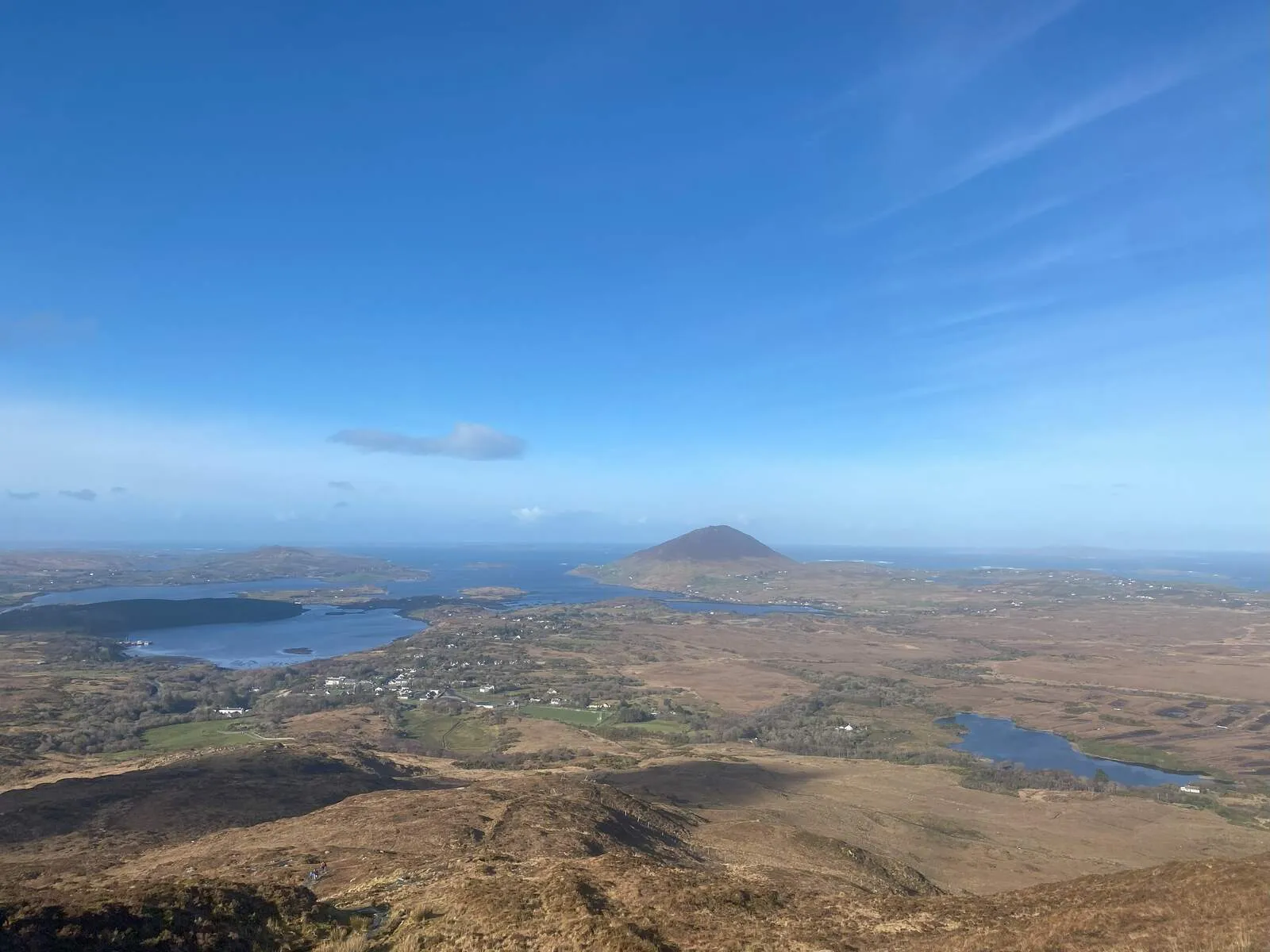
Connemara National Park
2000-hectare park featuring Diamond Hill trails, bogland ecosystems, and ancient tombs like the Letterfrack Dolmen. Includes a visitor center with guided hikes and cultural exhibits.
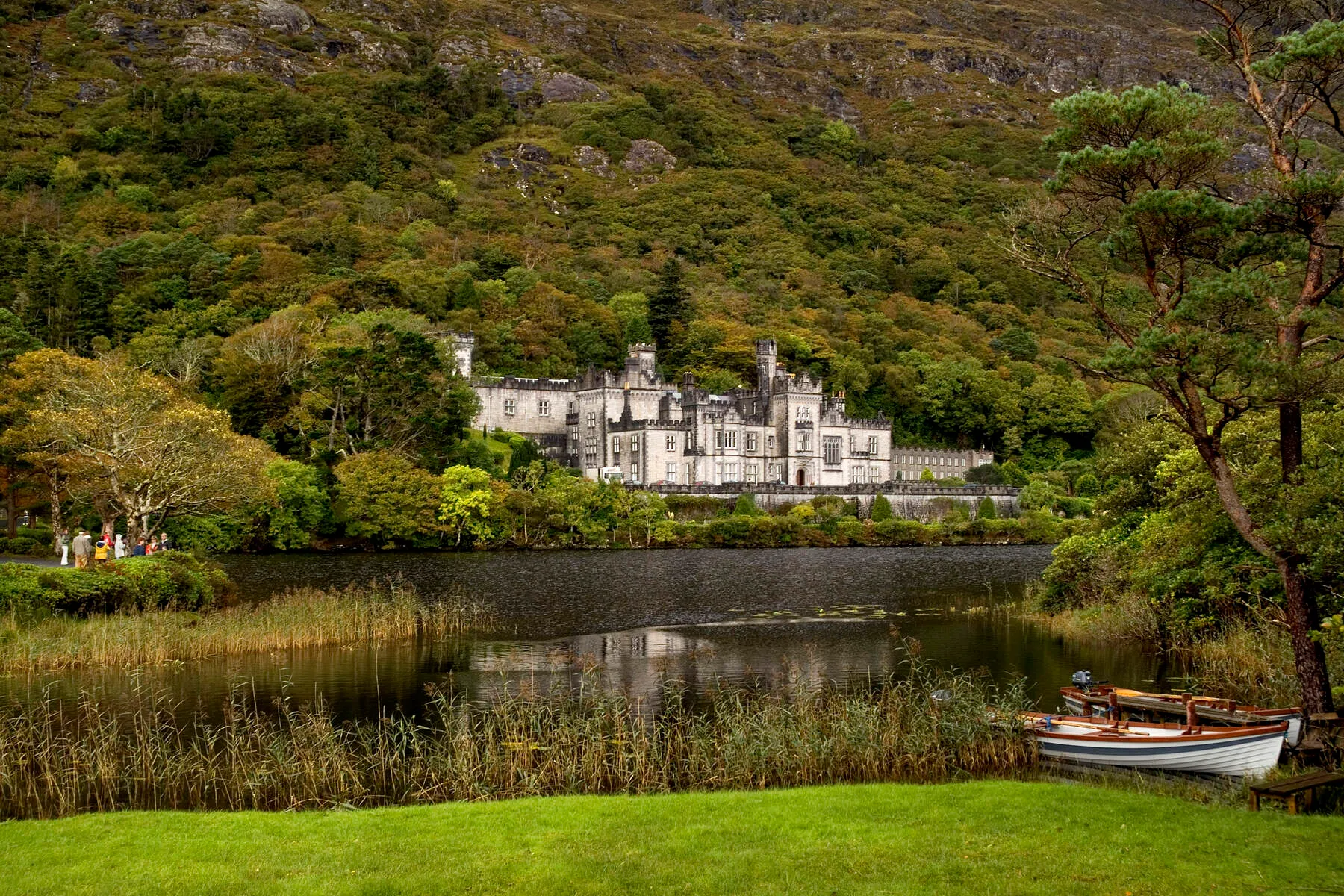
Kylemore Abbey & Victorian Gardens
Neo-Gothic abbey built in 1867 with restored monastic rooms and award-winning walled gardens. Offers guided tours of the castle, lakeside walks, and seasonal events.

Aughnanure Castle
16th-century tower house by the O'Flaherty clan overlooking Lough Corrib. Features intact defensive walls and offers insights into Gaelic Ireland's chieftain system.
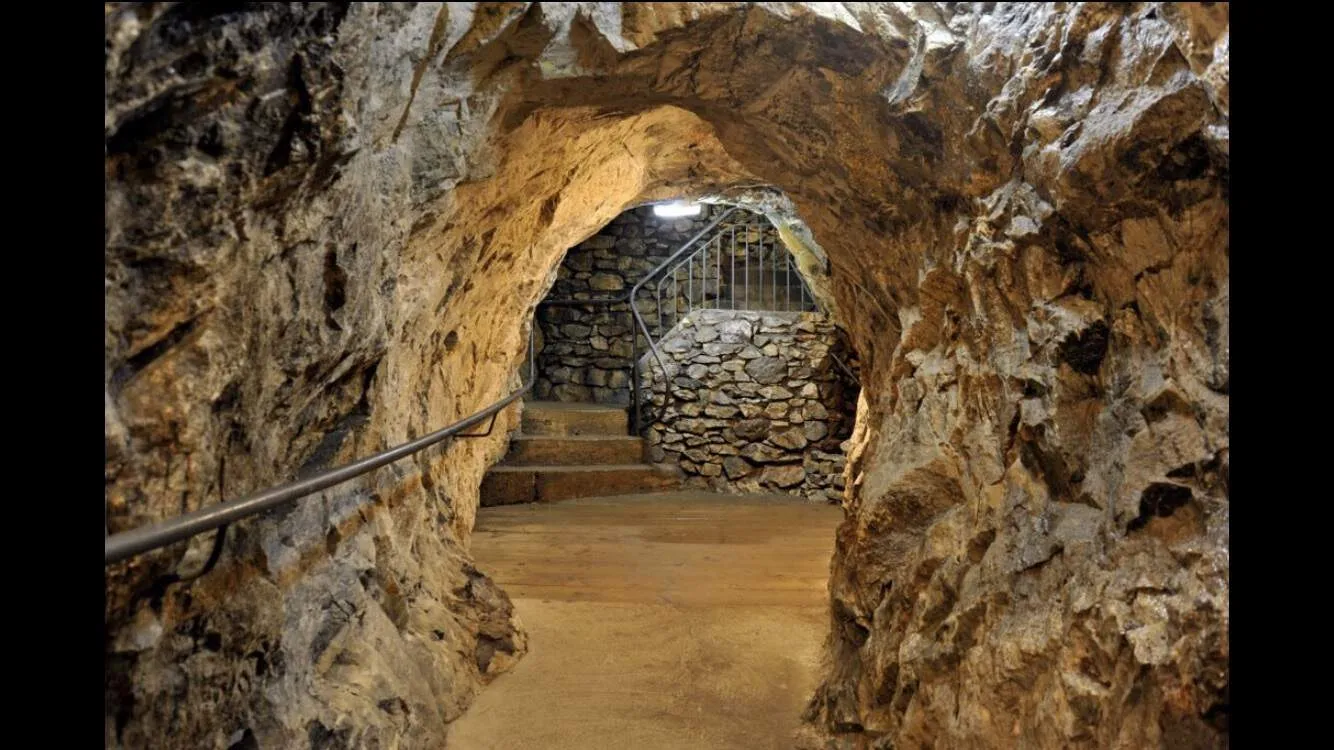
Glengowla Mines & Gold Panning
19th-century silver/lead mines with guided underground tours. Guests can pan for gold in the onsite stream using historic methods.
Sky Road Scenic Drive (Clifden)
Iconic coastal route offering panoramic views of the Twelve Bens mountains and Atlantic Ocean. Ends at Eyrephort, a Romantic-era pilgrimage site.
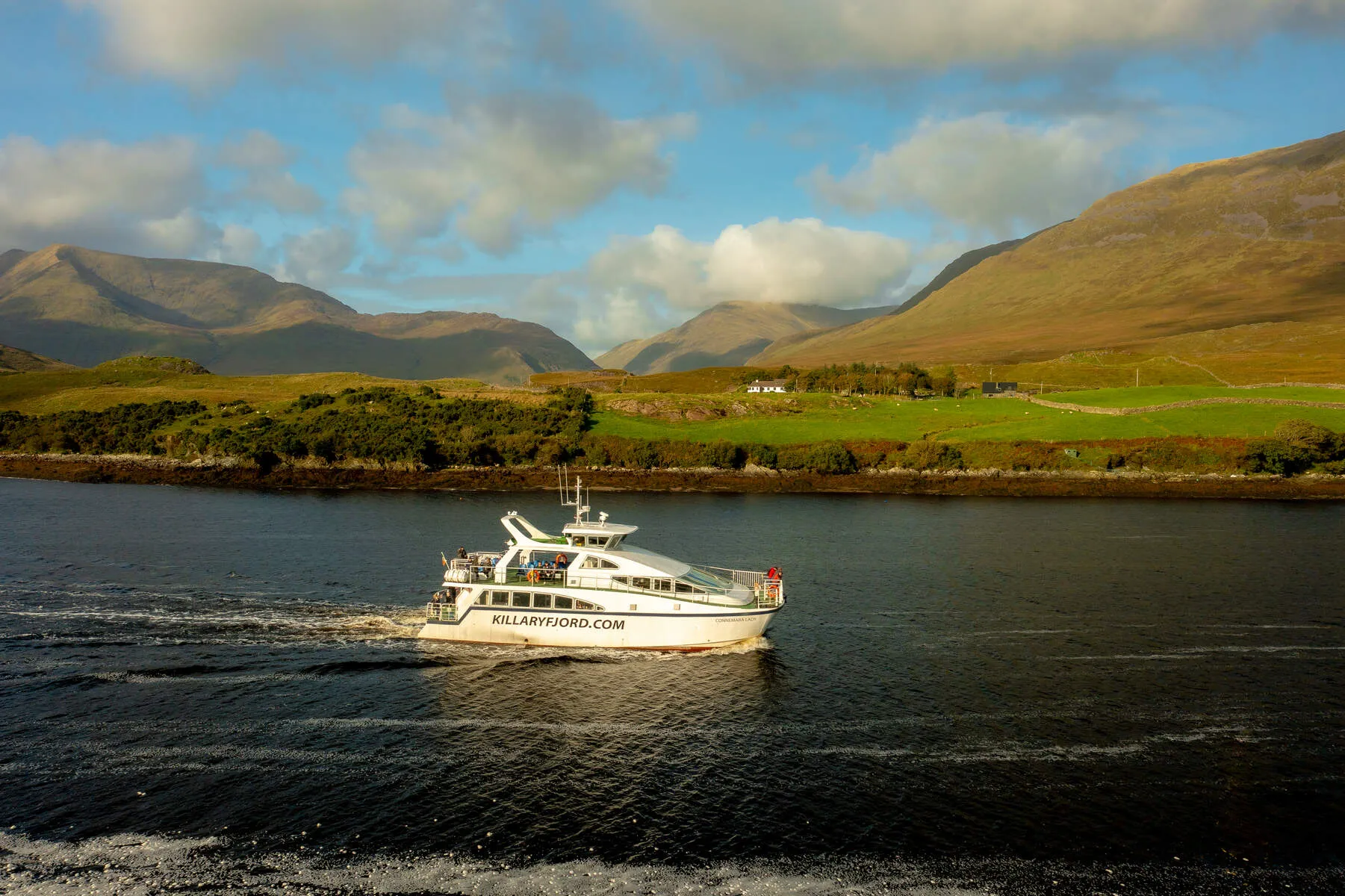
Killary Fjord & Boat Tours
Only fjord in Ireland accessible via Killary Cruises' glass-roofed boats. Boat trips may include the 'Misunderstood Heron' food truck and views of Maumturk Mountains.
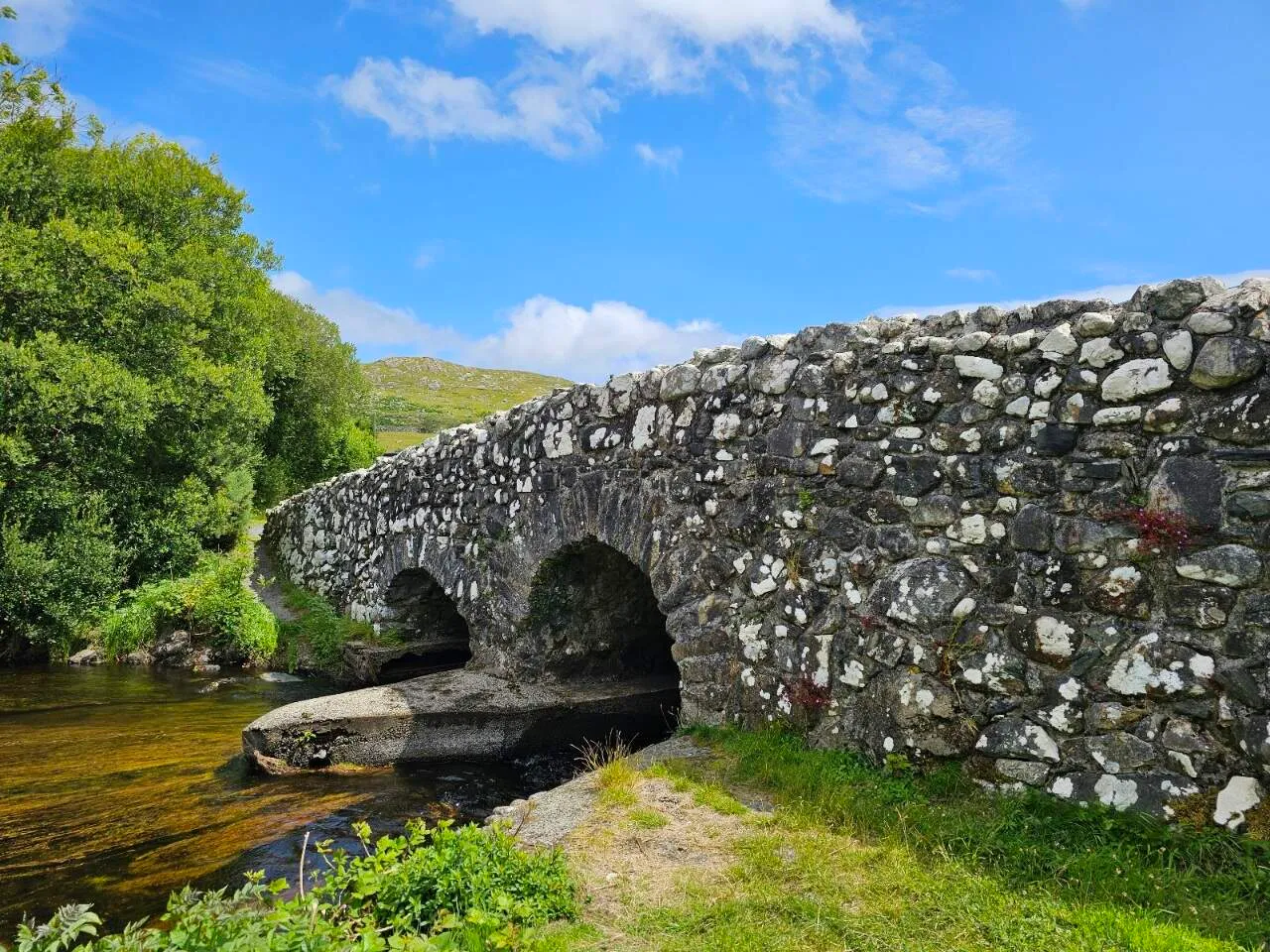
Quiet Man Bridge Film Site
Stone bridge made famous by John Wayne's 1952 film. Located near Ballybunion Road with interpretive signage about the movie's legacy.

Inchagoill Island Monastic Site
Island in Lough Corrib with 6th-century monastic ruins visible during boat tours from Maam Valley. Features round tower foundations and ancient burial sites.
Brigit's Garden & Roundhouse
4.5-hectare living museum showcasing traditional Connemara life through reed-thatched crannógs, blacksmith demonstrations, and native plant gardens.
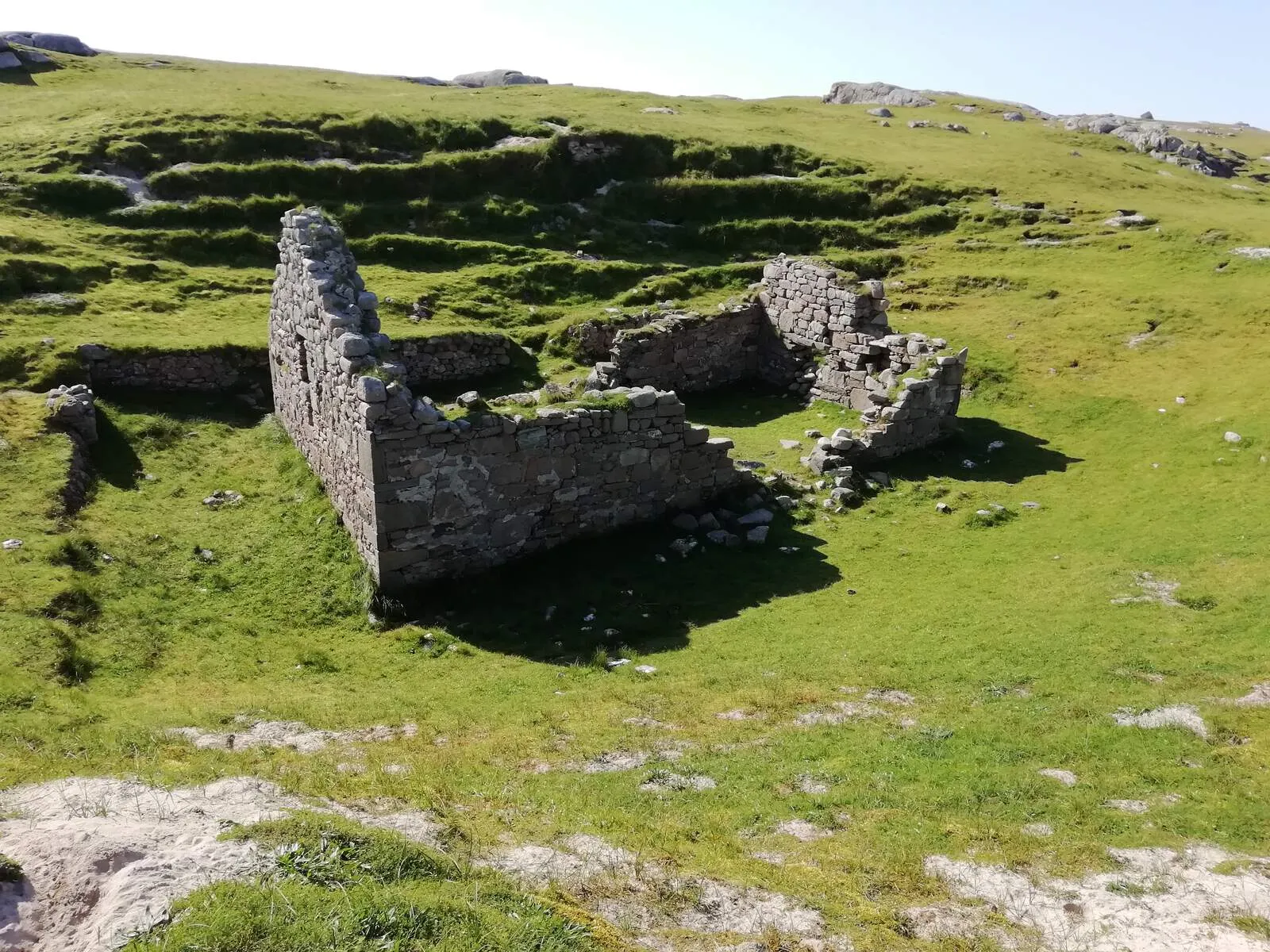
Omey Island Tidal Walk
Accessible on foot during low tide to explore Teampaill Féichín church ruins and observe tern colonies nesting along the tidal flats.
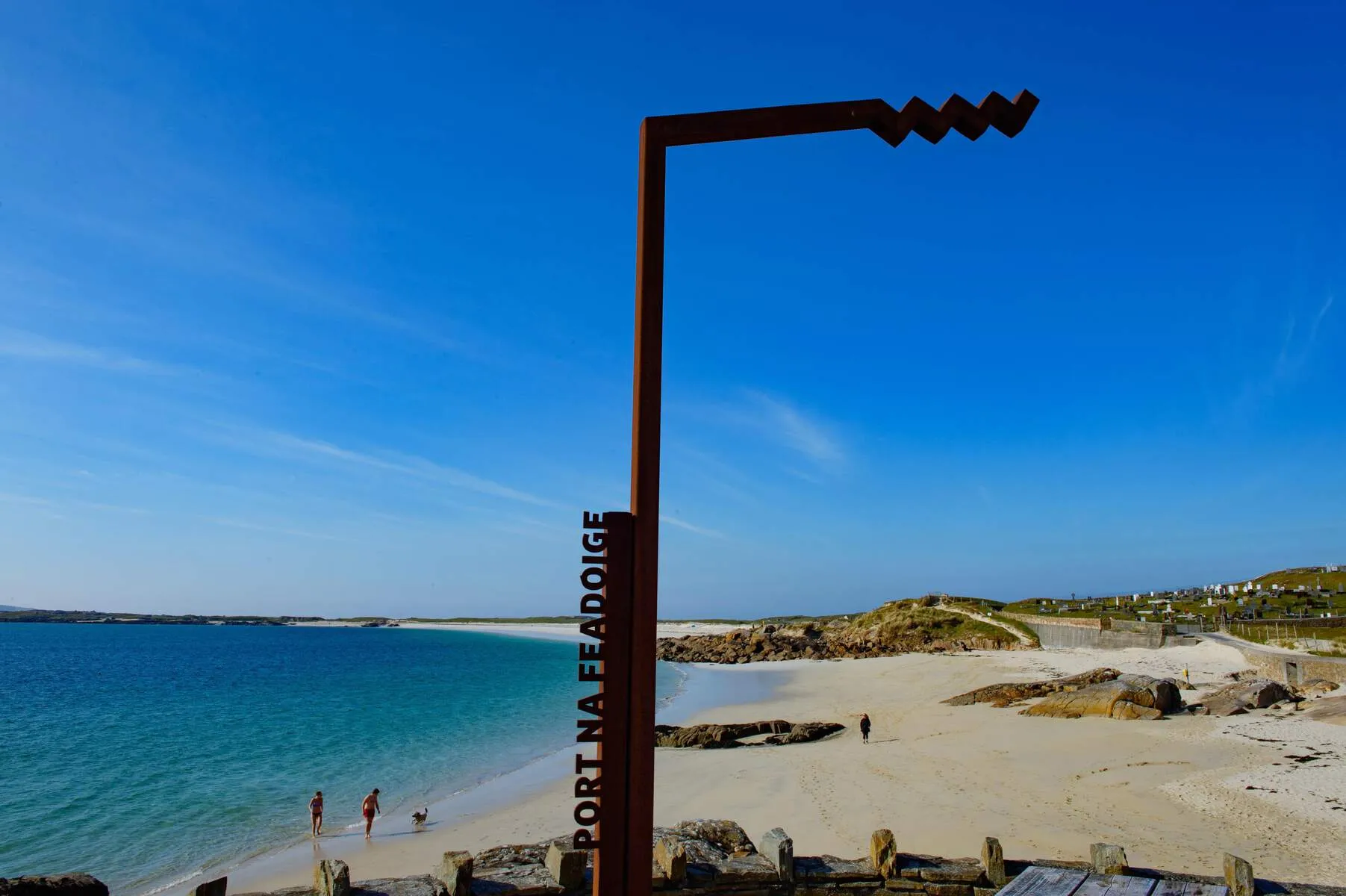
Gurteen Beach & Dog's Bay Loop
Pair of beaches near Ballyconneely: white-sand Gurteen is ideal for swimming, while rocky Dog's Bay offers dramatic sea stacks and fossil hunting.
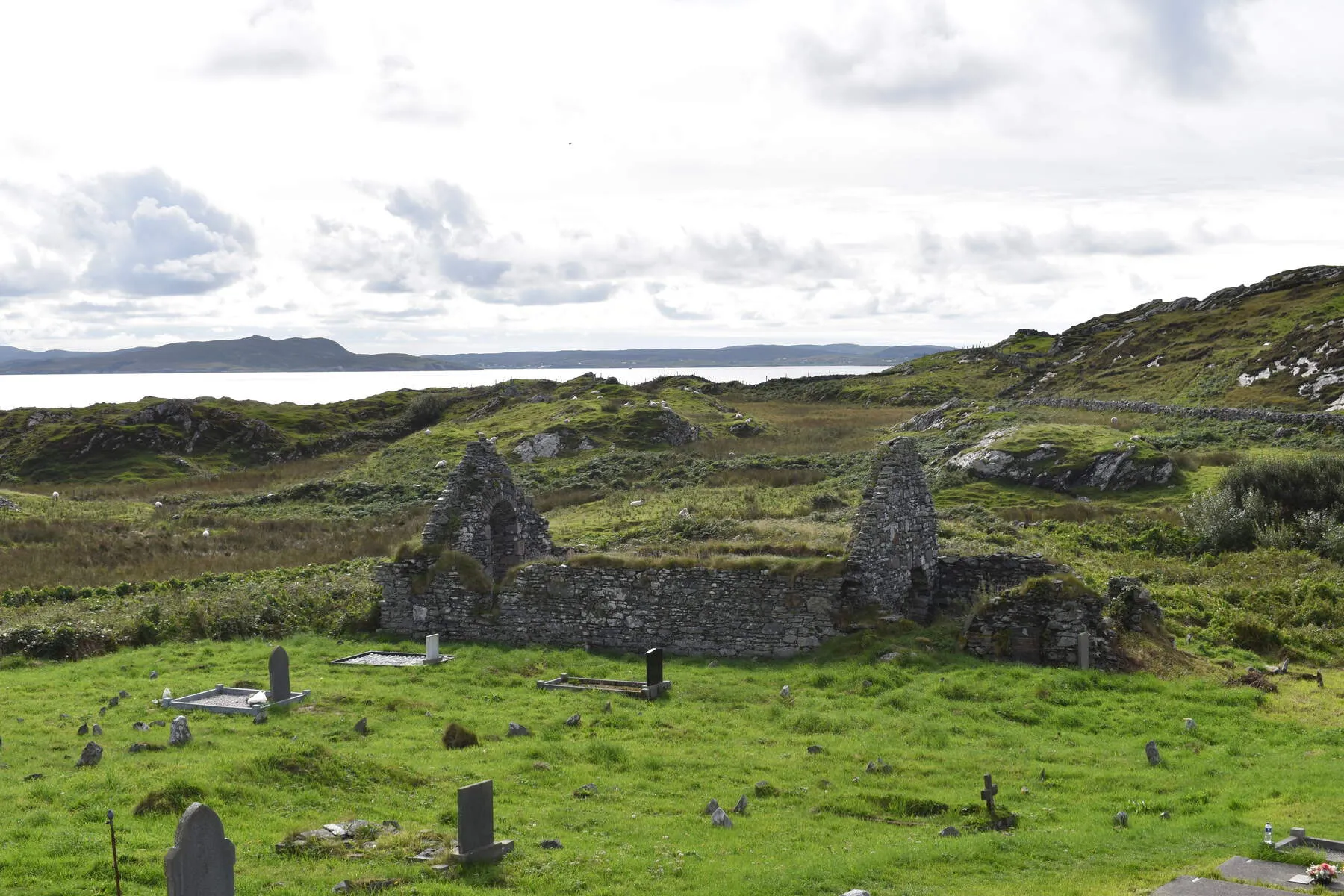
Inishbofin Island Day Trip
Ferry-accessible island with unspoiled landscapes, historic churches like St. Colman's, and a coastal path circumnavigating the entire island.
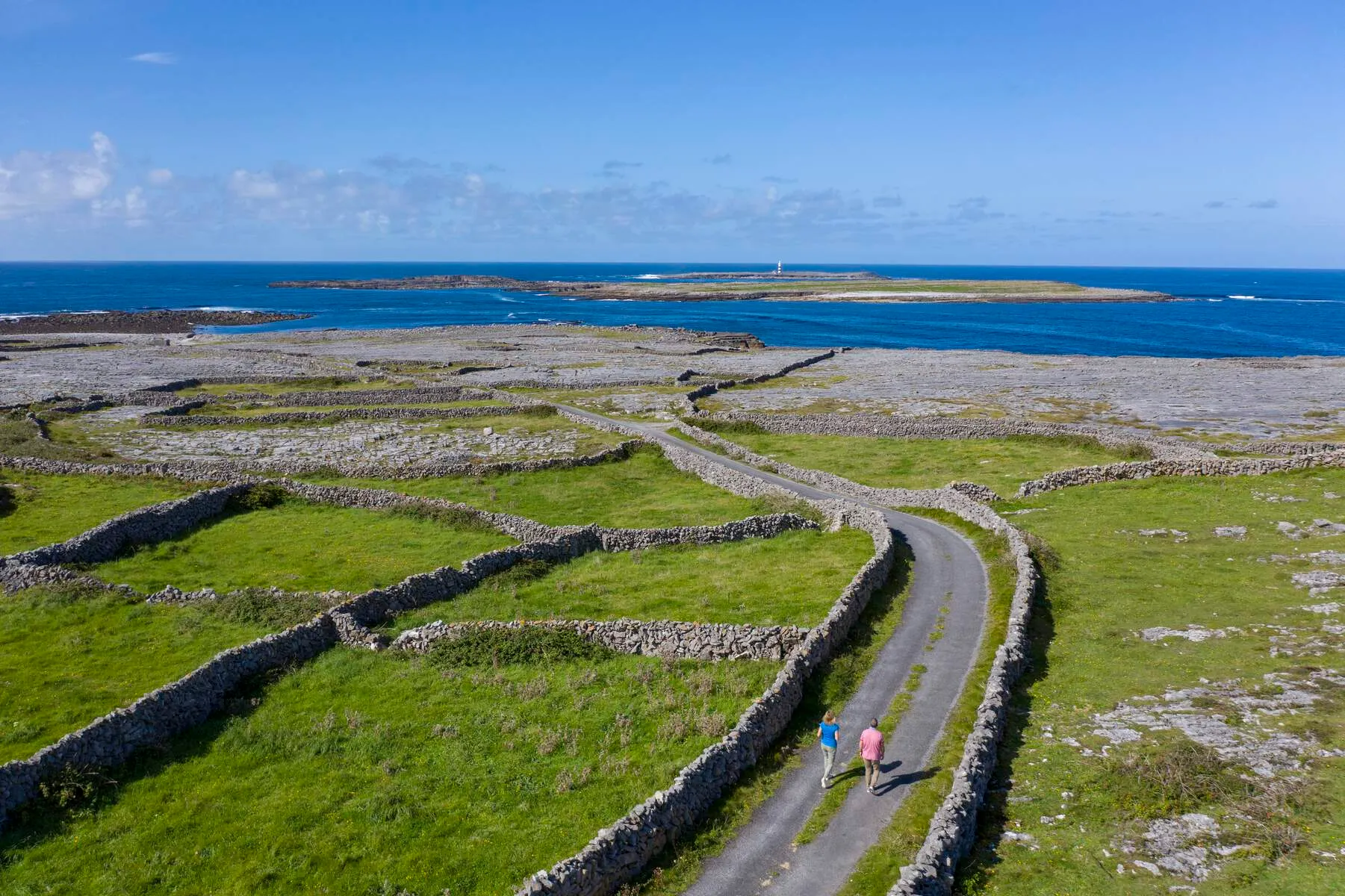
Aran Islands & Dún Aonghasa
Largest island group with 2000-year-old Dún Aonghasa cliff fortress. Reachable by ferry from Rossaveel for cultural heritage tours and seabird watching.
Renvyle Peninsula Coastal Drive
45km route passing Glassilaun Beach, Quaker village ruins, and viewpoints like Blackrock with vistas of the Twelve Bens range.

Twelve Bens Mountain Range
Signature mountain group including Benbaun (1760m) featured in National Park hikes. Offers trails like the Letterfrack Loop with historical mining sites.
Getting There
By Air
The closest airport is Ireland West Airport Knock (NOC), which is approximately 60 miles (97km) from Connemara. Shannon Airport (SNN) is around 75 miles (120km) away, while Dublin Airport (DUB) is about 210 miles (338km) from Connemara.
By Train
The nearest train station is Galway's Ceannt Station, which offers regular services from Dublin's Heuston Station. From Galway city, you can take a bus or taxi to Connemara.
By Bus
Regular bus services connect Galway city to various towns and villages throughout Connemara, including Clifden, Letterfrack, and Leenane. These buses are operated by Bus Éireann and private companies like Citylink.
-
Bus Éireann: operates daily public transport from Galway City to Clifden
-
Citylink: offers regular direct service between Galway City and Dublin Airport, and daily services from Galway to Clifden
By Car
The main road to Connemara is the N59, which connects to the M6 motorway from Dublin.
-
From Galway City, take the N59 road to Clifden, the "Capital of Connemara"
-
The route passes through breathtaking scenery with dramatic contrasts of lakes, sky, land, and bog
-
Alternative route: connect to the Wild Atlantic Way for a more scenic drive
Events & Festivals 2025
There are currently no events listed. If you would like to add an event, please contact us.
History
Connemara's history stretches back to the Mesolithic era, with evidence of human presence dating to around 5000 BC. The region was later inhabited by various kingdoms and territories, including Aidhne, Uí Maine, and Conmhaícne Mara, before becoming part of County Galway in 1569.
As Christianity spread, monasteries were built throughout the county, keeping written records of events and people. The traditional Irish language and culture remain strong in Connemara, with many residents still speaking Irish today. In fact, according to the 2016 census, over 84,000 people in County Galway claimed they could speak Irish.
The Anglo-Norman influence on the region is evident in the city of Galway, which was established by 14 merchant families of Norman heritage in the 13th century. These families, known as the "Tribes of Galway," played a significant role in shaping the city's history and identity. The city's strategic location made it an important commercial center, with trade links to Spain and other European countries.
In the 16th century, the region was affected by the English conquest, and power was concentrated in the hands of the "Tribes of Galway." The city's charter was extended in 1545 to include jurisdiction over the Aran Islands, which lie off the coast of Connemara. The islands are home to ancient stone forts, such as Dun Aonghusa, and offer a glimpse into Ireland's rich prehistoric past.
The 19th and 20th centuries saw significant events shape Connemara's history, including the Irish Civil War, during which 22 Irish boys were displaced from a Connemara orphanage in 1922. More recently, the region has experienced an influx of tourists, drawn to its natural beauty, outdoor activities, and cultural attractions.
Today, visitors can explore Connemara's unique landscape, which has been shaped by 750 million years of evolution. The region's distinctive dry stone walls, traditional cottages, and rocky islands, such as Inchagoill, are a testament to its rich history and cultural heritage. With its strong Irish-language presence, historic sites, and stunning natural beauty, Connemara is a truly unique and captivating destination.